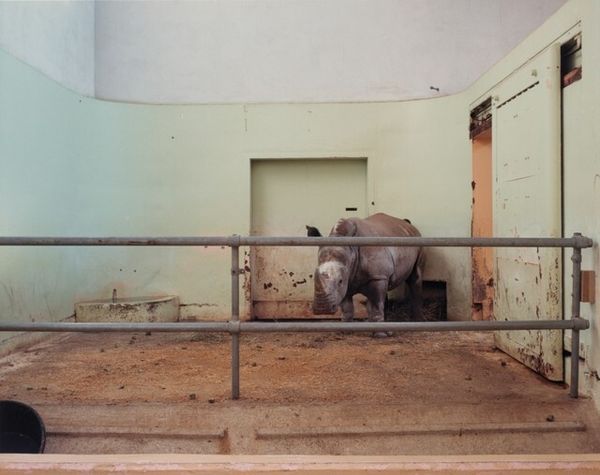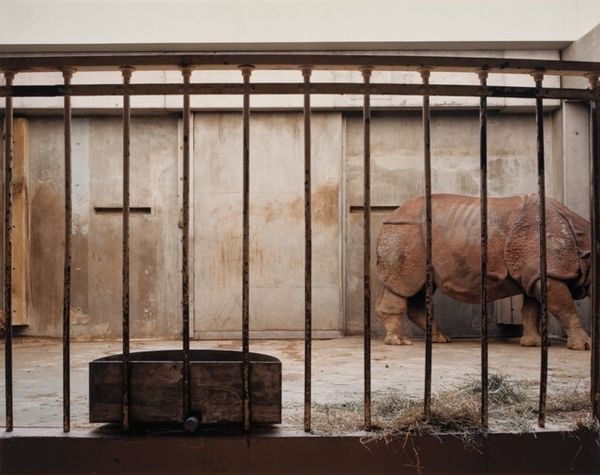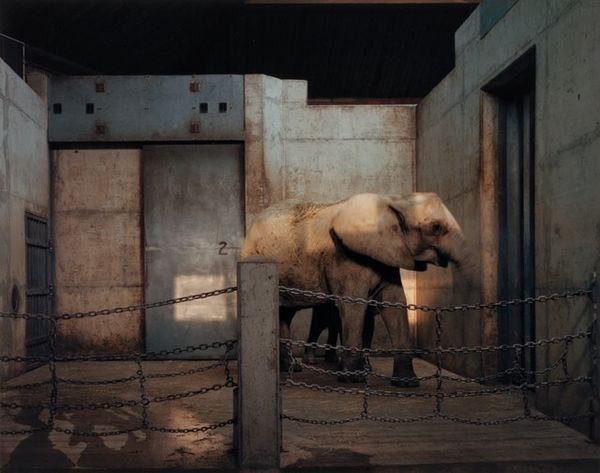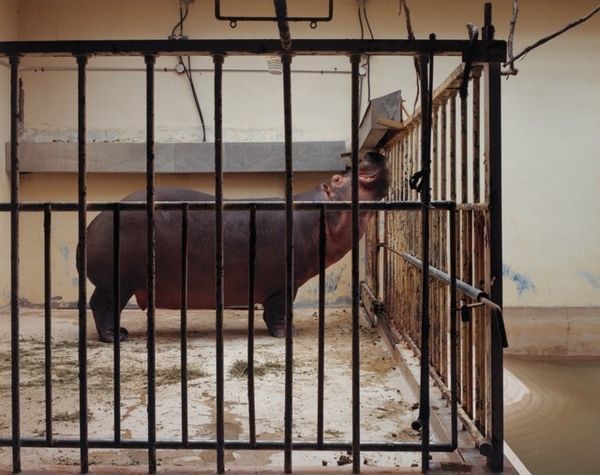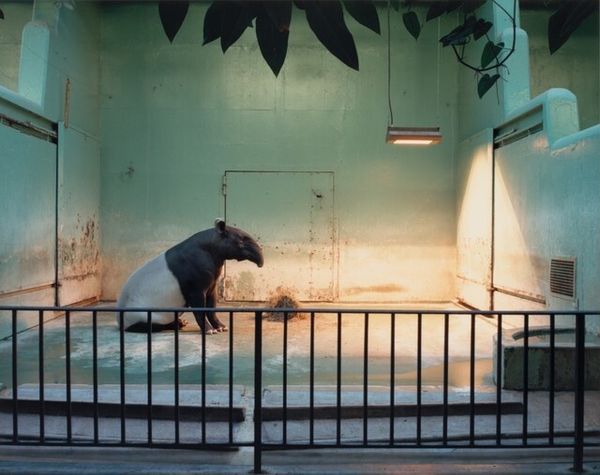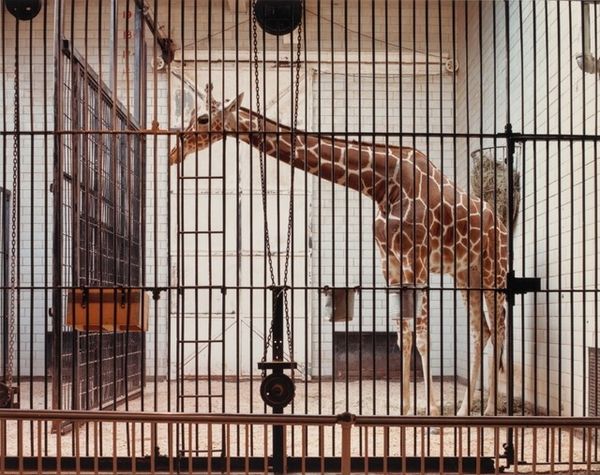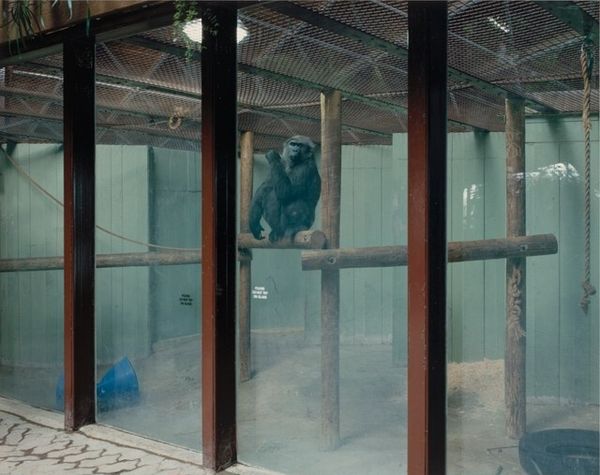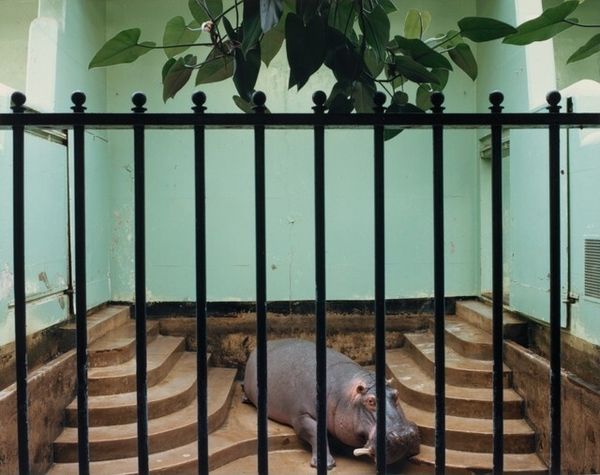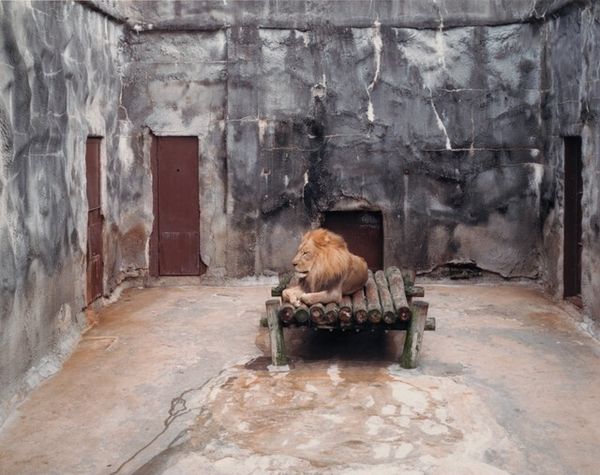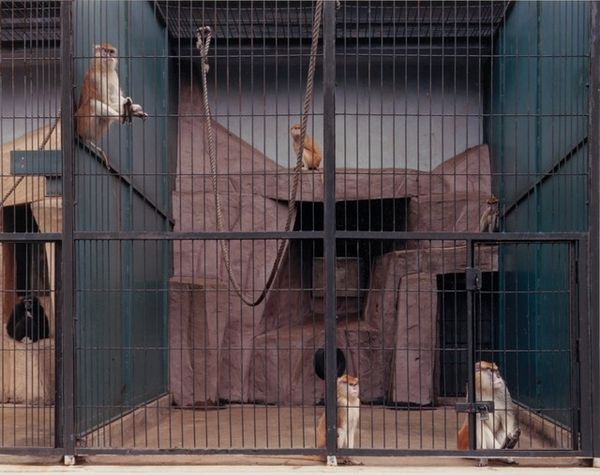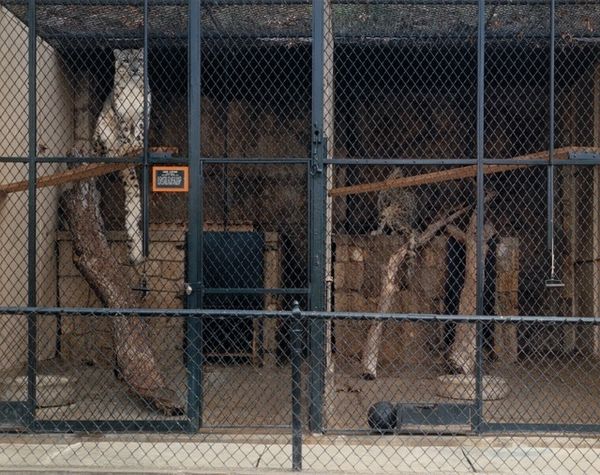
photography
#
landscape
#
photography
#
realism
Dimensions: image/sheet: 16 × 20 cm (6 5/16 × 7 7/8 in.) mount: 20.32 × 25.4 cm (8 × 10 in.)
Copyright: National Gallery of Art: CC0 1.0
Curator: Volker Seding's photographic work, "White Rhinoceros, Chester, England" from 1990, captures a poignant scene. What strikes you initially about this photograph? Editor: The somber enclosure immediately makes me think of the ongoing debates surrounding animal rights and the ethics of captivity. The muted color palette—the rhino's grey skin against the enclosure’s faded concrete—reinforces a sense of confinement and perhaps even hopelessness. Curator: I agree. And the image raises questions about photographic realism. Consider the labor involved: Seding chose this specific moment, used specific film, lens, and printing techniques to represent an animal contained by architecture made from metal, glass and concrete. The light from the corrugated roof highlights those industrial textures. Editor: Absolutely. By framing the animal this way, Seding encourages a wider critique. It’s not just a photo of a rhino; it’s a statement about biodiversity, neocolonial power structures implicit in such institutions, and the commodification of the natural world. Curator: The building itself suggests layers of construction and reconstruction. You notice how light streams in unevenly? It seems almost to comment on preservation. Editor: Yes, the plants included in the enclosures also raise this contrast of an idealized natural surrounding but ultimately confined and artificial for its subject. Curator: Indeed. While aesthetically captivating, its conceptual complexity and attention to the physical context challenge our understanding of these environments, not just of a photograph. Editor: Right, and placing the endangered rhino in this constructed environment really highlights its vulnerability—reflecting perhaps on broader social and environmental precarity. This image serves as an evocative document, prompting deeper thought on the human impact of control and conservation. Curator: Looking at the process and intent behind such works reminds me of how human actions are embedded in seemingly neutral images, prompting questions about how labor and technology shape art and environment. Editor: Absolutely, making visible the intricate entanglements that often remain unseen is what makes this so memorable and conversation-worthy.
Comments
No comments
Be the first to comment and join the conversation on the ultimate creative platform.
